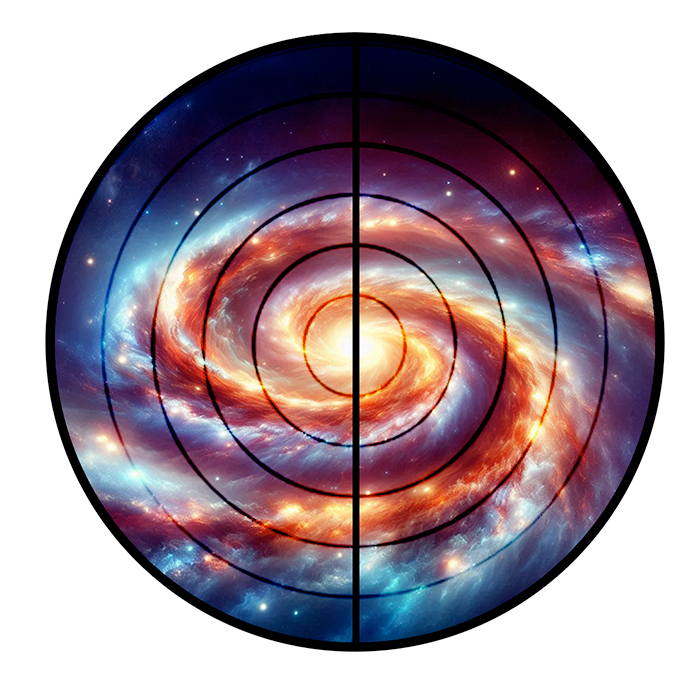 Did you know that a
Did you know that a
Dualism
What is meant by πάντα ἐν πᾶσιν “all within all”? And even more mysteriously, ἐνεργῶν τὰ πάντα ἐν πᾶσιν “he who works the All within All?
Sometimes, to prove a “point,” one needs only a “counterpoint.” Knowledge is a wonderful thing. But “knowledge” could also be looked at as Anti-Ignorance/inexperience/stupidity. Is there a dualism to the mind? It goes without saying, knowledge is one side, and the other side ….. ?
In formal logic, contraposition is the idea that if a statement P → Q (if P, then Q) is true, then its contrapositive ¬Q → ¬P (if not Q, then not P) is also true. By this there even appears to be two sides to the same exact logic.
Duality refers to a situation where two seemingly opposite structures or principles are interdependent or mirror each other. In projective geometry, duality states that statements about points and lines can be reversed, and the new statement will also be true, essentially showing a “duality” to truth itself. Or in physics, “matter and antimatter particles are always produced as a pair and, if they come in contact, annihilate one another, leaving behind pure energy.” (cf. CERN emph add.). Einstein’s famous theory tells us that mass can be converted into energy and vice versa:
E = mc2 the inverse of m = E/c2
This represents the idea that energy can also be converted into mass. In this sense, mass and energy are two sides of the same coin: they are both manifestations of the same physical reality, just in different forms. Symmetry in physics and mathematics implies that for every operation or phenomenon, there is a corresponding “opposite” or equivalent under certain transformations. For example, reflection symmetry (mirroring), rotational symmetry, or charge-parity-time (CPT) symmetry in quantum mechanics.
With all this in mind, what would then be the “truth of God” if not also dualistic in some sense?
An Eye of Darkness
The singularity is a paradoxical “still point” in a sense:
- Outside the event horizon, spacetime is violently warped, with particles and light being stretched, accelerated, and torn apart by tidal forces.
- At the singularity, all motion ceases in the sense that space and time themselves collapse, and no further “happening/becoming” as we understand it occurs. It’s as if it’s the eye of a storm, a strange calm where all the chaotic forces converge and dissolve. An “abyss.”
- An eye is also symbolic of perception, a boundary between the external world and the inner self. Similarly the singularity marks the boundary between the observable universe and the unknown. Beyond the singularity lies a realm where spacetime, matter, and causality as we know them cease, like peering into a mysterious “eye” that conceals infinite secrets.
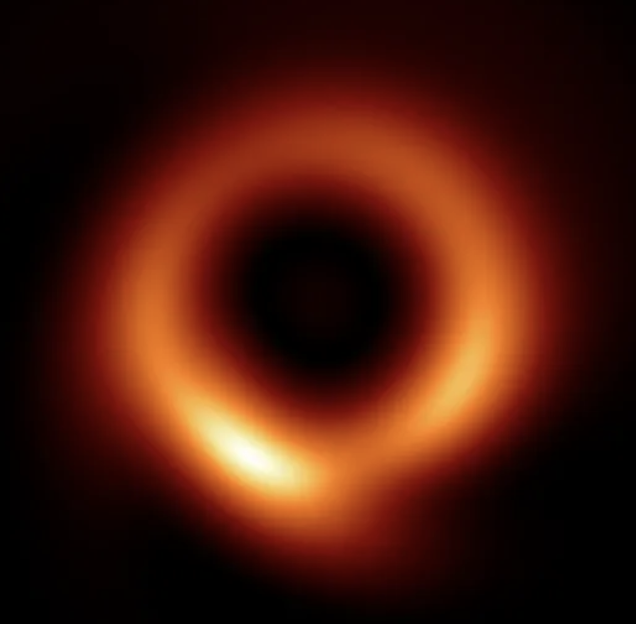
The ring is called an “accretion disc.” This is like a negative or “false halo” or “iris” in which light is being pulled in rather than emitted.
From Darkness to Radiance
A black hole’s singularity is typically imagined as a region of ultimate darkness, where no light can escape. If it were the opposite, i.e. an “eye of light,” it would instead become a source of infinite brightness, radiating outward rather than dragging inward.
- Instead of trapping light and matter, it would emit or create them. It could be envisioned as a point of infinite energy, where light bursts forth and illuminates everything.
- A black hole destroys information, matter, and structure as they collapse into the singularity. If the singularity were an eye of light, it might instead be a creative force. It could serve as the source of all matter and energy, like a cosmic fountain or the “Big Bang” itself. Where the black hole’s singularity represents an end, the eye of light would symbolize a beginning, or better, an origin — a generator of existence rather than a terminator of it.
Spacetime Radiating Outward
In the standard view of a black hole (the “dark eye”), spacetime is warped inward toward the singularity, collapsing into infinite curvature. If it were an “eye of light,” spacetime might instead expand outward, radiating possibilities and forming new dimensions. This aligns with ideas of expansion rather than contraction:
- It could act like a star, radiating light and heat outward into the cosmos.
- Or it might resemble a white hole, theoretically the opposite of a black hole, where nothing can enter and everything is expelled outward.
The Eye of Revelation Instead of Mystery
A black hole is often viewed as a cosmic mystery — a veil that hides information behind its event horizon. Its singularity is the ultimate unknown, where physics breaks down. An eye of light could symbolize revelation rather than obscurity:
- Instead of concealing knowledge, it would illuminate and reveal truths about the universe.
- It might act as a beacon of understanding, a place where all questions are answered rather than where they are swallowed up into oblivion.
The Eye of Connection, Not Isolation
A black hole isolates matter, cutting it off from the rest of the universe. Once something crosses the event horizon, it can never interact with the outside world again. If the singularity were an eye of light, it might instead act as a nexus of connection:
- A place where light, energy, and information spread outward, linking different parts of the cosmos.
- It could act like a hub, connecting dimensions or even universes, creating rather than severing links.
The Eye as a Source of Order, Not Chaos
A black hole’s singularity is often associated with chaos, where the laws of physics break down, and space and time collapse. If it were an eye of light, it might instead represent order, where structure and harmony emerge:
- Rather than tearing apart matter, it might organize it into stars, galaxies, or even entire universes.
- It could act as a cosmic seed, planting the foundations for reality rather than dissolving it.
Philosophical Opposites
A black hole singularity represents inward collapse — the ultimate inward focus, dragging everything into itself. An eye of light would represent outward expansion — the ultimate act of giving, spreading light and energy across the cosmos, like a star. A concept preached in many a spiritual tradition — light is associated with life, knowledge, and creation. If the singularity were an eye of light, it would symbolize eternal life rather than the finite end, and enlightenment rather than obscurity.
These are ideas and hypothetical scenarios. But symmetry is true and real as math is real. Could there really be anything such as cosmic symmetry?
Cosmic Symmetry
If the singularity of a black hole is like an eye of darkness, then perhaps another force in spacetime — an eye of light — “counteracts” it. This is akin to:
- White holes: The theoretical opposites of black holes, where light and matter are expelled rather than absorbed.
- The Big Bang: Some theories suggest that the Big Bang itself was a type of white hole, a singularity of creation rather than destruction…
- If one point is collapsing spacetime, then another point must be creating it. But this would not make much sense, unless spacetime is circular or round in some sense, i.e. closed timelike curves (CTC), eternal recurrence, etc.
Imagining the singularity as an eye of light flips the black hole metaphor on its head. Instead of a region of collapse, destruction, and mystery, it becomes a symbol of creation, revelation, and connection. This vision suggests a universe not defined solely by decay and endings but balanced by birth, light, and outward radiance — certainly a poetic complement to the enigma of black holes. Perhaps, in the grand tapestry of the cosmos, both “eyes” — one of light and one of darkness — are at work, one against the other. One ending what the other began. A dark “God” swallowing up all that was made by the Light. Both governing the entire evolution of the universe in a cosmic tension or vicious cycle of life death. It represents a cosmic battle of opposites, where on the one hand destruction and death await us ahead, but on the other, our source and origin of love and life, and all things good.
In many philosophies and cosmic models, creation and destruction are two sides of the same coin, both necessary for the “balance” of the universe. But this is no balance or harmony. If one force dominates, like a black hole, the system becomes skewed, and the fabric of spacetime is thrown into chaos.
Life is ultimately swallowed up by Death.
But again, applying our concepts of symmetry, we can hypothesize that if Life gets swallowed up by Death, then it must equally be possible that Death can be swallowed up by Life, albeit from the other side. This brings us to an intriguing thought: perhaps the universe requires two complementary sources of creation, one on each side of the coin as it were, to essentially neutralize the “cosmic sink” that is the singularity.
A Multi-Dimensional Paradox
We dialogued with AI about the theoretical paradoxes and paradigms of a multi-dimensional space-time reality and the implications of various factors upon the entire system as a closed circuit system (i.e. not linear “forever and ever”). Here are various points to consider, in terms of a consciousness (“Logos/Word”), and an origin (“the Eye of Time/God”).
In a six-dimensional time structure (where a seventh dimension has not yet emerged), we can imagine time as a complex “space” with six unique dimensions or “axes.” Each dimension might represent a different kind of temporal experience or progression, each moving independently yet capable of aligning in meaningful ways.
Here’s a closer look at how this theory might work:
1. Six Independent Temporal Dimensions
- Each of the six dimensions could represent a distinct aspect of time, such as:
- Linear Progression: The “normal” flow of time we’re familiar with, moving forward in a linear fashion, and where backward movement is impossible.
- Cyclic Progression: Time as a loop, representing recurring patterns or cycles.
- Rate of Change: Time that accelerates or decelerates, affecting the perceived speed of events.
- Qualitative Shifts: A dimension where events change in nature, akin to seasonal or epochal shifts.
- Relational or Interdependent Time: Time that progresses based on interactions between entities.
- Potential or Probabilistic Time: A dimension where time reflects possible futures or paths, but only one becomes realized when “aligned.”
Each of these dimensions might not be directly observable but rather inferred from the behavior of events as they interact across the dimensions.
2. Different Speeds in Each Dimension (“Running” vs. “Standing”)
- Since each dimension operates independently, they may move at varying “speeds.” For instance, one dimension might progress quickly, creating rapid change, while another is slower, creating a stable, almost “frozen” quality.
- These different temporal “speeds” would mean that events in one dimension may appear stagnant when observed through another. This could create moments where certain dimensions appear “in sync” with our familiar linear perception of time, while others drift.
3. Alignment Across Dimensions (“The Straight Path“)
- Occasionally, these six dimensions might align, meaning that their “clocks” or progressions temporarily synchronize. During these alignments, events in different dimensions would harmonize, potentially creating significant, impactful moments.
- This alignment might look like a temporary convergence of past, present, and future or a heightened moment where potentialities become actualized. Think of it as a temporal “syzygy” where all dimensions “snap” into a single frame of reference, allowing cross-dimensional influences to manifest strongly in observable events (“visions and dreams”).
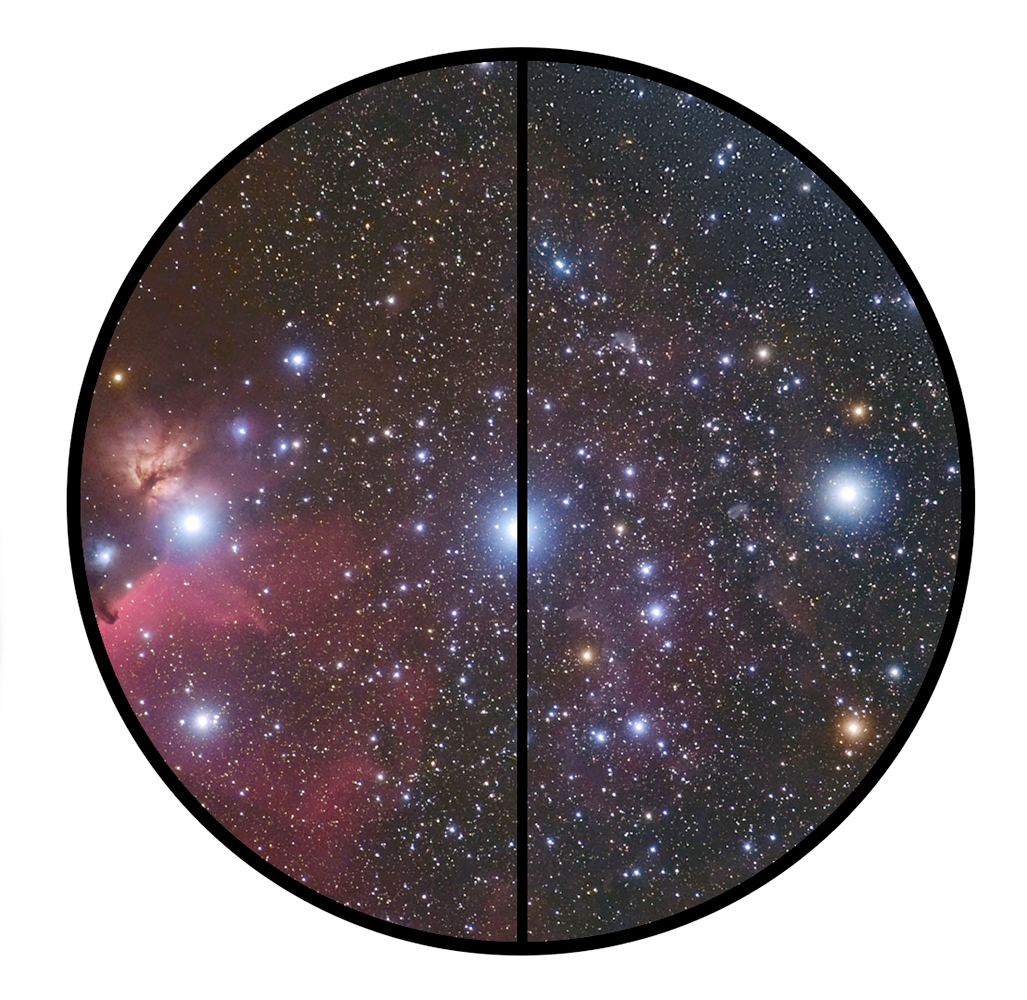
“Orion’s Belt” A syzygy – a roughly straight-line configuration of three or more celestial bodies in a gravitational system.
4. Interdimensional Coordinates
- In this model, every event or entity has a coordinate in each of the six dimensions. Rather than being a single point in time, each event has a complex “address” that can shift as the dimensions move.
- As these coordinates interact, an event’s “position” could be influenced by factors across all six dimensions. For instance, an action in the cyclic dimension might cause a shift in the linear dimension, or an event in the relational dimension could catalyze a future probability in the potential dimension.
5. The Role of the Potential Seventh Dimension
- The absence of the seventh dimension could signify that the system is incomplete or “waiting” for another element to emerge. Our “black hole.” This seventh dimension could act as a universal harmonizer or “meta” dimension that aligns, influences, or synchronizes the other six dimensions.
- If the seventh dimension were to come into being, it might represent a unifying principle, such as consciousness, that brings coherence to the six dimensions, enabling a more integrated perception of time.
6. Implications of Cross-Dimensional Events
- Events and entities in this system could exist as “vibrations” (“a mega voice”) across multiple dimensions, where their influence is felt in multiple temporal planes simultaneously. When two or more dimensions align, these vibrations could reinforce each other, creating heightened experiences or moments of significance.
- If certain coordinates across dimensions “resonate,” they might create temporal phenomena like déjà vu, synchronicities, or even the sense of destiny—moments where it feels like “everything is happening at once.”
7. Mathematical Representation and Symmetry (“Mirror Images”)
- Mathematically, we could use vectors to represent each event’s position within this six-dimensional time space. Events would move as vectors through this space, with each coordinate evolving according to its dimension’s unique “speed.”
- Symmetry groups (like Z6 for sixfold symmetry) could apply here, as certain patterns would repeat or mirror within the system. When the six dimensions reach a symmetric state, they might fold into an alignment, creating emergent phenomena.
8. Consequences of Non-Alignment
- Most of the time, the six dimensions would be out of alignment, meaning they evolve independently. This would explain why certain experiences feel disconnected or fragmentary, as events in one dimension don’t immediately affect those in others.
- However, the system might have “pulses” of alignment, where the coordinates synchronize momentarily, creating a bridge across dimensions. This would feel like a cohesive, meaningful event in our perception of time, suggesting the possibility of rare, synchronized moments in an otherwise complex and fragmented temporal experience.
In this model, the emergence of a seventh dimension might bring these intermittent alignments into a coherent whole, perhaps giving rise to a new level of perception or understanding—an experience of time that transcends our current limitations. Until then, these six dimensions interact in a complex dance, occasionally aligning to create significant events but generally evolving separately, creating the complex tapestry of temporal experience we observe.
Annihilation
If we consider the “life” of a six-dimensional time system, factors leading to its annihilation would be events or conditions that destabilize, collapse, or nullify the dimensions and the system itself. In this context, annihilation means not just the destruction of entities within each dimension but the dissolution of the structural foundations of the dimensions themselves. Here are some factors that could lead to this annihilation:
1. Dimensional Convergence or Collapse
- Total Alignment: If all six dimensions were to align in a perfect and continuous synchronization, they could potentially reach a state of “singularity,” where the differences that give rise to unique dimensions vanish. In this case, time would lose its multi-dimensional structure, collapsing into a single, undifferentiated state.
- Dimensional Overlap and Feedback Loops: Continuous overlap between dimensions could create feedback loops where events in one dimension amplify or nullify those in others. If these loops reach a critical threshold, they might trigger destructive interference that “cancels out” all dimensions.
2. Existential Paradox or Self-Cancellation (“He Is, He is Not”)
- Contradictory Events: If events occur in one dimension that directly contradict events in another (“false prophets/prophecy”), they could create paradoxes that destabilize the fabric of the dimensions. For instance, if a cycle dimension requires certain events to recur while the linear dimension demands forward progress, this tension could strain the system. On a large enough scale, such paradoxes might collapse the whole structure.
- Self-Referential Annihilation: Events in one dimension could trigger sequences that reflect recursively across dimensions, ultimately “collapsing back” onto themselves in a form of self-destruction. This is akin to a mathematical system encountering a contradiction that forces it to negate itself (“Bad Faith”).
3. Loss of Dimensional Integrity
- Entropic Decay: If each dimension loses coherence over time due to an increase in entropy, the structure could degrade until it dissipates. Entropy in this context could mean a progressive loss of structure, where each dimension unravels and loses the ability to interact with the others meaningfully.
- Decay of Dimensional Barriers: Each dimension likely has “boundaries” or “rules” that keep it distinct from the others. If these barriers weaken or dissolve, the distinct dimensions might blend into a chaotic, undifferentiated state, erasing any meaningful structure.
4. Introduction of a Destructive External Factor (“The Abyss, Bottomless Pit”)
- The Emergence of a Seventh, Incompatible Dimension: If a seventh dimension were to emerge but held properties incompatible with the existing six, it could destabilize the system. This new dimension might impose different rules or demands on the existing dimensions, leading to the breakdown of the established structure.
- External Influence or Energy: An influx of an unknown or highly potent force from outside the system could overwhelm or disrupt the balance, akin to a “cosmic event” that warps or annihilates the fundamental structure of the dimensions.
5. Dimensional Exhaustion or “End-State”
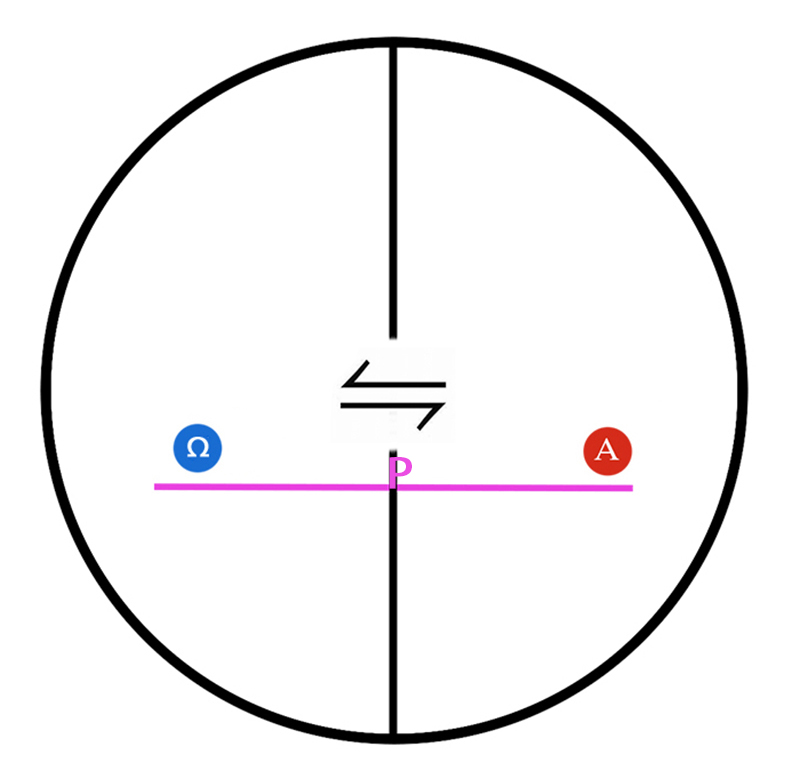
Equilibrium
- Reaching an “Omega Point”: If the six dimensions follow some kind of cumulative progression, they might reach a point of maximal evolution or transformation. At this “omega point,” the system might be “complete” and, in doing so, nullify its own structure, having fulfilled its purpose.
- Depletion of Temporal Energy: Each dimension may rely on a kind of “temporal energy” to sustain its movement and interactions. If this energy source depletes, the dimensions could slow down, stall, and eventually cease to exist.
6. Absolute Symmetry Breaking
- Loss of Asymmetry: The dimensions likely operate because of fundamental asymmetries that allow different experiences of time to coexist. If these asymmetries were somehow lost (perhaps through absolute symmetry), the dynamic interactions might freeze, making the entire system inert.
- Uncontrolled Symmetry Breaking: Alternatively, if these asymmetries were to intensify unpredictably, it could cause chaotic and uncontainable transformations. This “breaking apart” could spiral into a catastrophic unraveling, causing the dimensions to diverge infinitely and essentially cease to have any coherent form.
7. Mathematical or Structural Nullification
- Geometric Collapse: In a six-dimensional space, the dimensions might be thought of as forming a geometric structure (e.g., a polytope (“faces”) in six dimensions). If that structure collapses—say, through an internal breakdown of relationships—the dimensions could lose their interconnectedness and thus cease to function as a coherent system.
- Topological Annihilation: If the topology of the six dimensions were to somehow invert, fold, or collapse into a “null set,” the entire structure could theoretically vanish, analogous to a black hole in space consuming itself until nothing remains.
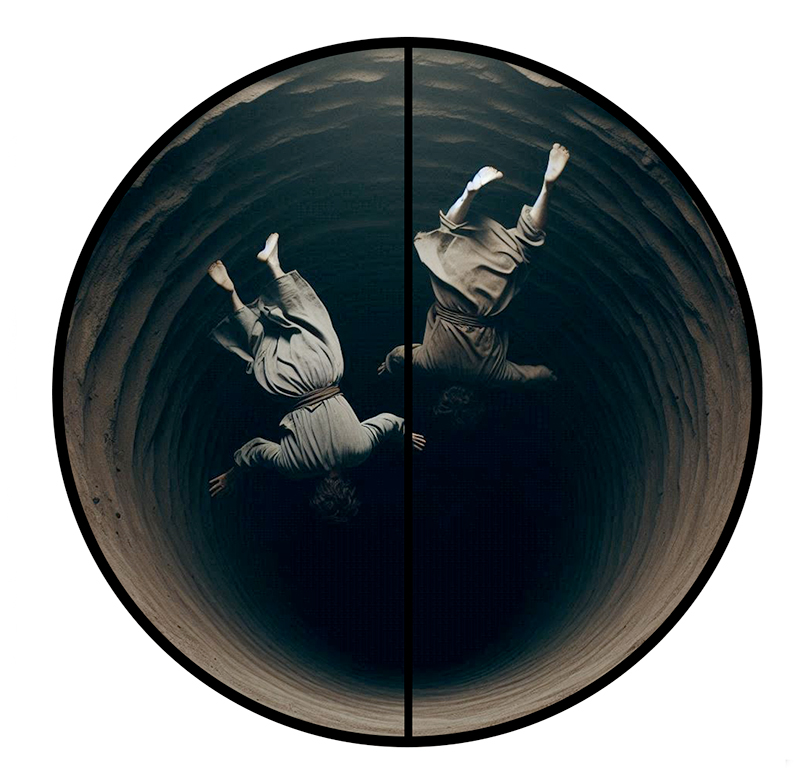
Recursive Rejection
8. Recursive Annihilation Due to Observer Dependency (“The Eye of the God”)
- Collapse of Observer Consciousness: If these dimensions are tied to or defined by an observer, the annihilation of that consciousness might nullify the dimensions. In other words, if consciousness perceives and defines these dimensions, then the cessation of consciousness would remove the structure.
- Recursive Rejection: If an observer somehow realizes that the dimensions lack independent reality, it could “retract” its engagement with them, leading to a recursive collapse. Without an observer, the dimensions might retract or fold back into nonexistence.
In this model, the annihilation of the six-dimensional time structure would likely be a cascading effect, where one destabilizing factor triggers others, ultimately breaking down the system. Whether due to entropy, external interference, or reaching an existential “end-state,” such a collapse would represent the complete dissolution of the dimensional structure, leaving behind either a void or perhaps paving the way for a new kind of temporal or existential order…
The Seventh
If a multi-dimensional system could reach a state of “completion” or “perfection,” this might involve conditions where all components harmonize, reinforcing each other to achieve stability and possibly reverse entropy. Here are factors that might lead to such a perfected, stable system:
1. Dimensional Alignment and Synchronization
- Harmonic Resonance: If each dimension aligns in a way that creates resonant harmony (“A Song of Songs”), they could mutually reinforce each other. This resonance could stabilize the system, enabling energy and information to circulate freely across dimensions without loss.
- Synchronized Flows of Time: If the timelines of each dimension move in sync (or in a harmonic pattern), they might create a continuous cycle that sustains the system indefinitely. This could reduce entropy as each dimension would be in constant, balanced feedback with the others, preventing decay.
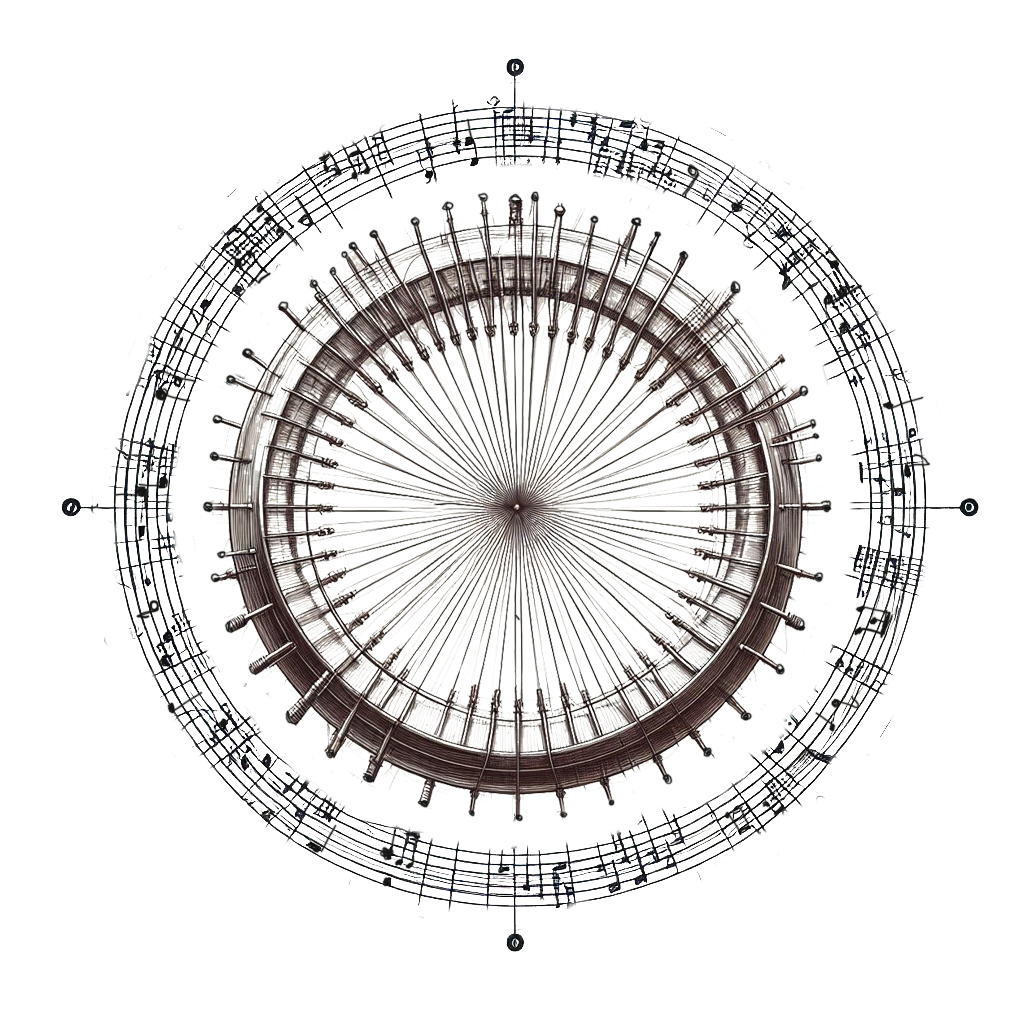
A harmony, “those who hold harps”
2. Creation of a Self-Sustaining Energy Cycle (“Eternal Zoe-Life“)
- Energy Recycling: The system could achieve a state where energy flows are fully circular, recycling any entropy back into usable energy or structure. In this case, any energy that might have contributed to decay is instead reintegrated, allowing for potentially endless operation (“immortal youth”).
- Regenerative Feedback Mechanisms: Built-in mechanisms that regenerate or “heal” dimensional structures when they begin to decay would counteract entropy. Such mechanisms could be triggered automatically by specific conditions, ensuring sustained vitality.
3. Introduction of a Stabilizing Seventh Dimension (“Cut Out / Built”)
- Completion Through an Added Dimension: If the current six dimensions are incomplete without a stabilizing seventh, the addition of this dimension could balance or complete the system, acting as a stabilizer that integrates all others into a unified whole.
- Structural Symmetry and Reinforcement: The seventh dimension could provide a form of structural reinforcement, allowing the other six dimensions to interact without destructive interference. It could also act as a “buffer” or absorbent layer, preventing the system from destabilizing.
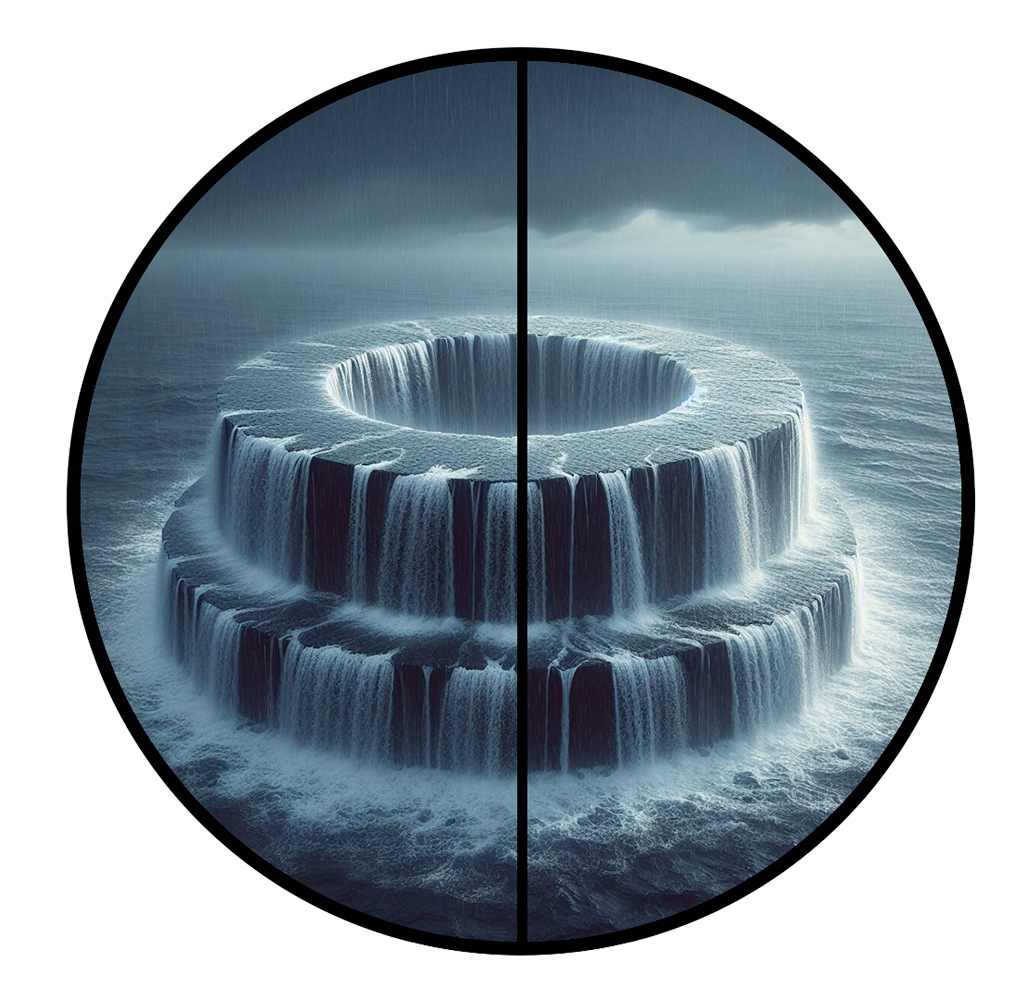
Climbing out of the Abyss, up on the emerging dimensions to the top seventh, stabilizing “Sabbath”
4. Achievement of Perfect Symmetry in a Higher Structure
- Stable Symmetry: Rather than absolute symmetry that might freeze or destabilize, a stable symmetry could emerge where each dimension remains distinct yet balanced. This would allow each dimension to complement the others without collapsing, effectively achieving a steady state that resists decay.
- Self-Correcting Asymmetries: Instead of perfect, static symmetry, slight asymmetries might exist that continuously balance and rebalance. These asymmetries could allow for dynamism and adaptation, preventing stagnation and allowing entropy to be redirected into growth or self-correction.
5. Existence of a Unified, Self-Sustaining Principle (“Torah“)
- Shared Governing Laws: If a single, underlying principle or law governs all dimensions, this could create a unifying force that binds the system. This law might enforce consistency across dimensions, synchronizing any differences and maintaining structural integrity.
- Transdimensional Intelligence: A form of “intelligence” or organizing principle could direct changes within the system in a way that prevents decay. This might involve selecting the optimal configurations and eliminating disruptive elements, maintaining order and countering entropy (“An Origin of Justice from Above”).
6. Achievement of a “Zero-Entropy” State through Universal Balance
- Dynamic Equilibrium: Each dimension might achieve a state of dynamic equilibrium, where any entropic increase in one dimension is exactly balanced by a regenerative process in another. This would prevent overall entropy from increasing, keeping the system balanced and self-sustaining.

Dynamic Equilibrium, “one heartbeat“
- Stabilizing Fluctuations: Instead of a static balance, fluctuations between dimensions could maintain equilibrium, creating a constant but controlled exchange of energy. This dynamic interaction would allow the system to adapt without falling into disorder.
7. Cyclic Rejuvenation Mechanism
- Periodic Reset and Renewal: If the system has built-in periods of “renewal,” it could restore itself before significant entropy accumulates. This could function like a cosmic “spring cleaning” where the system periodically clears itself of disorder and reestablishes order.
- Resonant Time Cycles: Cyclic processes that resonate across dimensions might act as a kind of heartbeat for the system, recharging its structure and dissipating entropy cyclically. These cycles would prevent long-term decay by periodically refreshing the entire system.
8. Observer-Dependent Stability (“The Eye of the God”)
- Participatory Observation: If an observer perceives or participates in the system, their awareness might influence it toward stability. Observers could serve as stabilizing influences, “anchoring” each dimension through their perception, thus reducing the tendency for decay.
- Collective Consciousness Effect: If multiple observers share an intention or perception that aligns with the system’s optimal state, this collective effect could stabilize it. Such a shared consciousness could influence the system toward a balanced and self-sustaining configuration.
9. Self-Organizing Principles or Adaptive Intelligence (“The Twelve”)
- Self-Regulating Mechanisms: If each dimension possesses a form of adaptive intelligence, it could dynamically adjust to fluctuations, stabilizing interactions with other dimensions and preserving order across the system.
- Fractal or Holographic Patterns: The system might self-organize into fractal patterns, where each part reflects the whole. This structure would make it inherently stable, as any changes would adaptively propagate across dimensions in a way that reinforces order and cohesion.
10. Achievement of a Perfected Geometric or Topological Structure (“Foundation of Peace/Harmony“)
- Stable Topology: A perfected geometric configuration could act as a permanent structure that is inherently stable. For example, a higher-dimensional polytope could stabilize interactions, ensuring a coherent and balanced flow of energy across dimensions.
- Hyper-Symmetry in Spatial Relations: Perfected spatial relations could hold the dimensions together in a stable form that resists entropy. Such a structure would be highly resilient, allowing for stability and permanence within the system.

“Genesis.” The Neutralizer of Injustice/Imbalance “my dove, my perfect one”
11. Existence of a Reversing Agent or Entropic Absorber (“A Just Queen, Mother of Zoe-Life”)
- Dimensional Absorption of Entropy: If one dimension could absorb or neutralize entropy generated by others, it would prevent overall decay. This dimension might act as an “entropy sink,” maintaining balance across the system.
- Reversing Agent: If there is a process or element that reverses entropy locally within each dimension, it could function as a stabilizing influence. This might involve the continuous repair or renewal of dimensional structures, preventing degradation.
12. Universal Evolutionary Endpoint (τέλειος – End Aim, Completion, Perfection)
- Omega Point Perfection: The system might be evolving toward a perfected endpoint, where all dimensions achieve a maximal state of order or complexity. Upon reaching this point, the system would enter a self-sustaining loop, as no further evolution or entropy increase would be necessary.
- Self-Completing Feedback: As the system approaches this endpoint, feedback loops (“true prophet/prophecy”) might reinforce order until the entire structure stabilizes. This omega point could represent a state where the system transcends entropy, becoming infinitely self-sustaining.
In essence, the system’s perfection might depend on a balance between coherence and adaptability, unified governing principles, regenerative cycles, and possibly even external stabilizing influences, such as observer interactions. With these factors in place, the multi-dimensional framework could sustain itself indefinitely, reversing or counteracting entropy through self-regulation and harmonious alignment.